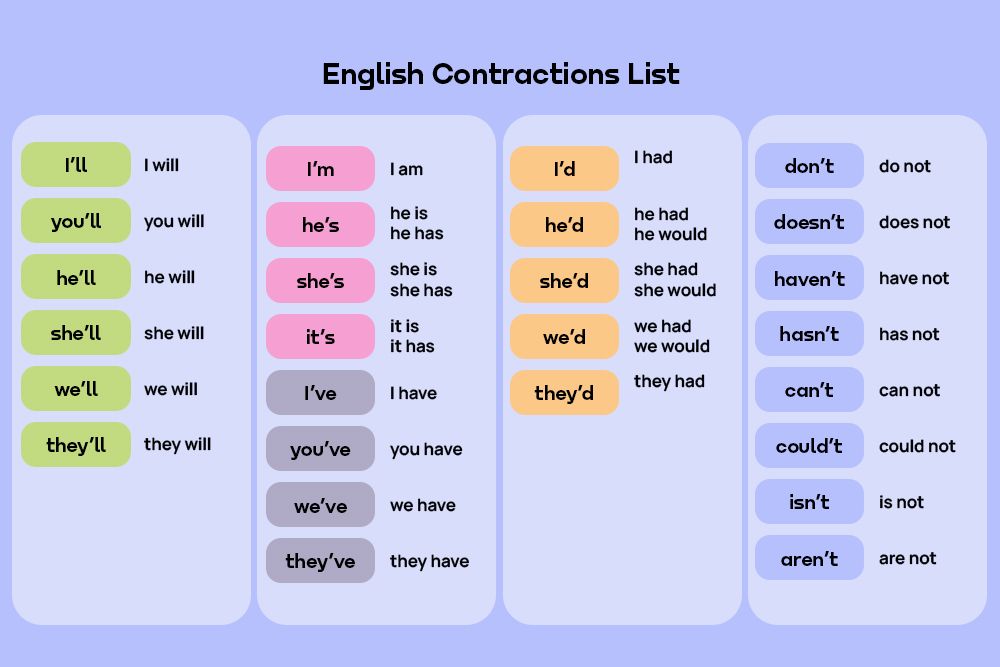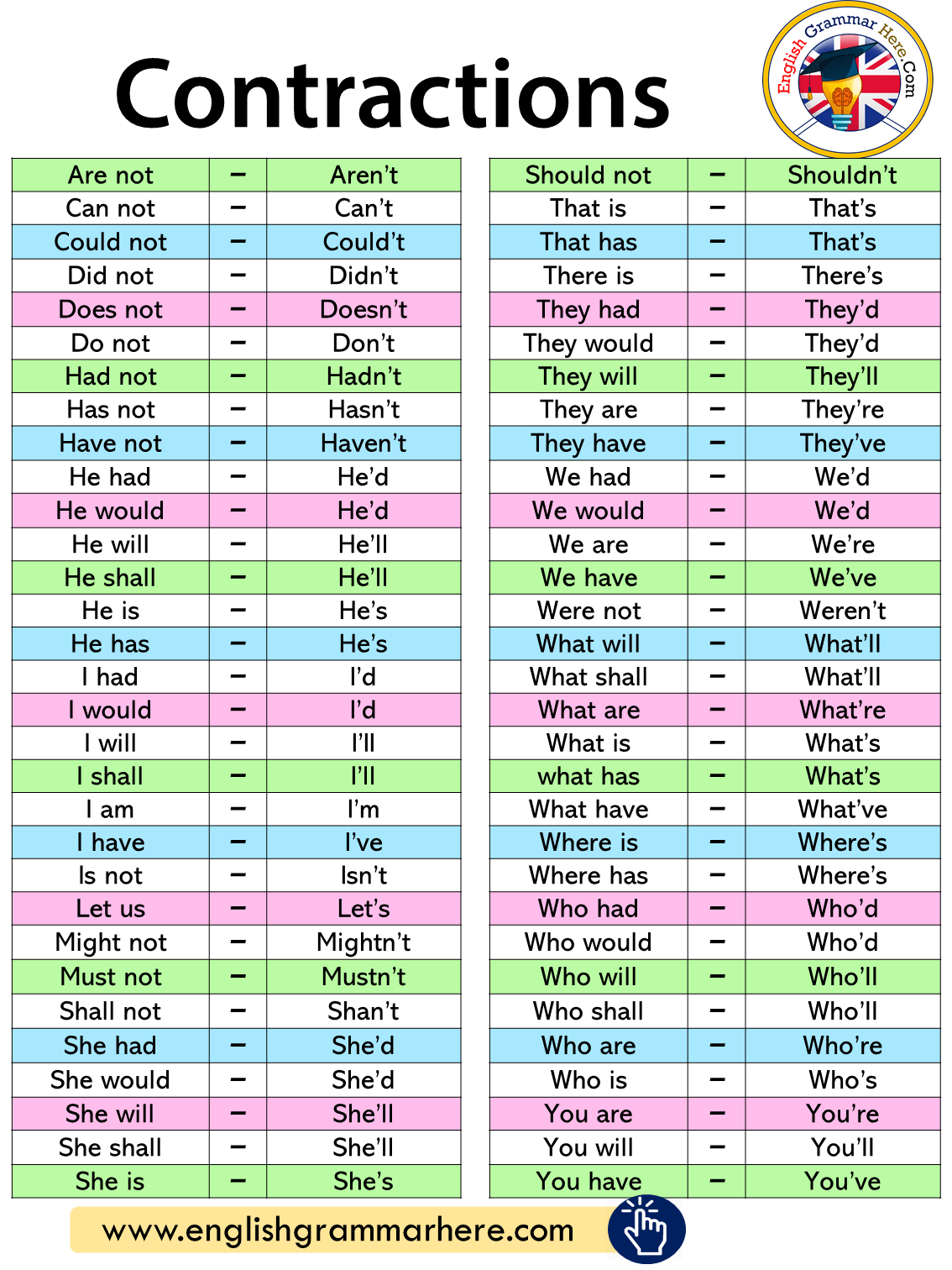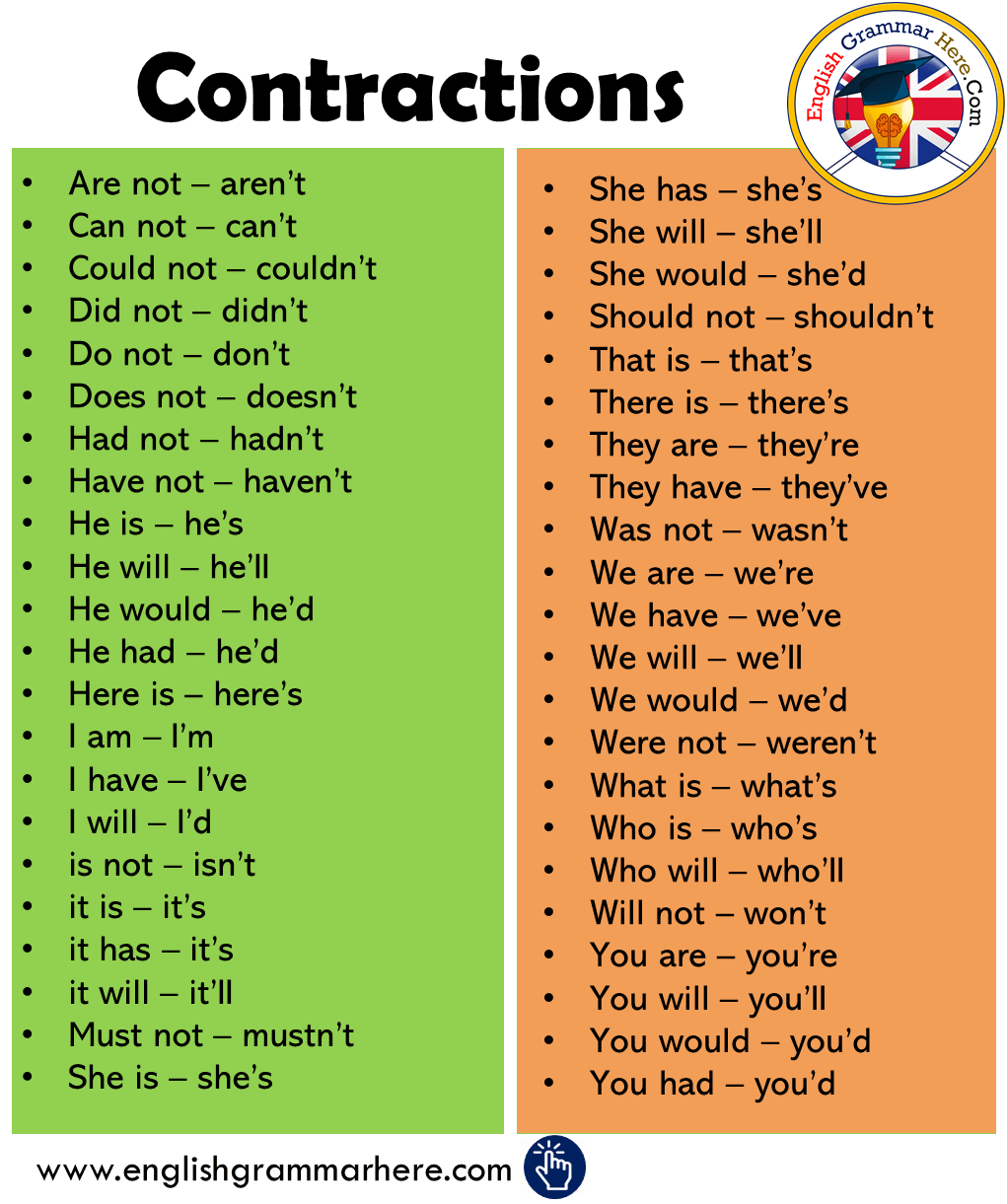I Would Contraction Form - So in your sentence i'd can't stand for i would, because would always has the basic verb form (go, see, have etc.) after it. Change two words in this sentence into a contraction. Would is followed by the bare infinitive. To tell the difference we need to look at what follows 'd: Learn how to use contractions (i’m, we’re) in everyday speech and informal writing. Use the verb would to make contractions. The contraction 'd can mean would or had. Find out the most common contractions with i, you, he, she,.
Use the verb would to make contractions. Find out the most common contractions with i, you, he, she,. Change two words in this sentence into a contraction. The contraction 'd can mean would or had. Would is followed by the bare infinitive. To tell the difference we need to look at what follows 'd: Learn how to use contractions (i’m, we’re) in everyday speech and informal writing. So in your sentence i'd can't stand for i would, because would always has the basic verb form (go, see, have etc.) after it.
Use the verb would to make contractions. So in your sentence i'd can't stand for i would, because would always has the basic verb form (go, see, have etc.) after it. The contraction 'd can mean would or had. Learn how to use contractions (i’m, we’re) in everyday speech and informal writing. Change two words in this sentence into a contraction. Find out the most common contractions with i, you, he, she,. To tell the difference we need to look at what follows 'd: Would is followed by the bare infinitive.
50+ Useful Informal Contractions with Examples in English ESLBUZZ
Learn how to use contractions (i’m, we’re) in everyday speech and informal writing. To tell the difference we need to look at what follows 'd: Change two words in this sentence into a contraction. The contraction 'd can mean would or had. So in your sentence i'd can't stand for i would, because would always has the basic verb form.
What is a Contraction in English Grammar? Promova Blog
Learn how to use contractions (i’m, we’re) in everyday speech and informal writing. To tell the difference we need to look at what follows 'd: Find out the most common contractions with i, you, he, she,. Use the verb would to make contractions. Change two words in this sentence into a contraction.
Detailed Contractions List in English English Grammar Here
So in your sentence i'd can't stand for i would, because would always has the basic verb form (go, see, have etc.) after it. The contraction 'd can mean would or had. Find out the most common contractions with i, you, he, she,. Change two words in this sentence into a contraction. Learn how to use contractions (i’m, we’re) in.
List of Contractions in English English Study Page
Learn how to use contractions (i’m, we’re) in everyday speech and informal writing. Would is followed by the bare infinitive. Use the verb would to make contractions. The contraction 'd can mean would or had. Change two words in this sentence into a contraction.
List of Contraction Words in English 1 Learn english vocabulary
Learn how to use contractions (i’m, we’re) in everyday speech and informal writing. Would is followed by the bare infinitive. The contraction 'd can mean would or had. Use the verb would to make contractions. Change two words in this sentence into a contraction.
Contractions List in English English Grammar Here
Change two words in this sentence into a contraction. So in your sentence i'd can't stand for i would, because would always has the basic verb form (go, see, have etc.) after it. Use the verb would to make contractions. Would is followed by the bare infinitive. Learn how to use contractions (i’m, we’re) in everyday speech and informal writing.
Abbreviations / Contractions Archives English Study Here
Find out the most common contractions with i, you, he, she,. So in your sentence i'd can't stand for i would, because would always has the basic verb form (go, see, have etc.) after it. Use the verb would to make contractions. Learn how to use contractions (i’m, we’re) in everyday speech and informal writing. The contraction 'd can mean.
Most Important Contractions List English Study Here
To tell the difference we need to look at what follows 'd: So in your sentence i'd can't stand for i would, because would always has the basic verb form (go, see, have etc.) after it. Would is followed by the bare infinitive. Learn how to use contractions (i’m, we’re) in everyday speech and informal writing. The contraction 'd can.
Detailed List of Contractions in English
So in your sentence i'd can't stand for i would, because would always has the basic verb form (go, see, have etc.) after it. Would is followed by the bare infinitive. Change two words in this sentence into a contraction. To tell the difference we need to look at what follows 'd: Find out the most common contractions with i,.
Words With Apostrophes Contractions
Use the verb would to make contractions. Would is followed by the bare infinitive. Find out the most common contractions with i, you, he, she,. Learn how to use contractions (i’m, we’re) in everyday speech and informal writing. So in your sentence i'd can't stand for i would, because would always has the basic verb form (go, see, have etc.).
Would Is Followed By The Bare Infinitive.
Change two words in this sentence into a contraction. Learn how to use contractions (i’m, we’re) in everyday speech and informal writing. Find out the most common contractions with i, you, he, she,. Use the verb would to make contractions.
The Contraction 'D Can Mean Would Or Had.
So in your sentence i'd can't stand for i would, because would always has the basic verb form (go, see, have etc.) after it. To tell the difference we need to look at what follows 'd:









:max_bytes(150000):strip_icc()/contractions-commonly-used-informal-english-1692651-v1-8415dc9952f04e08b9d5259e167e0051.png)